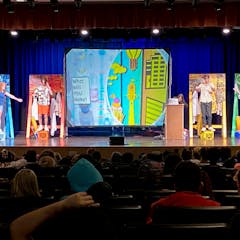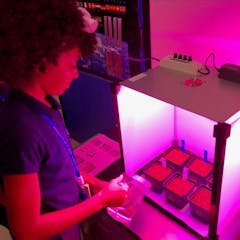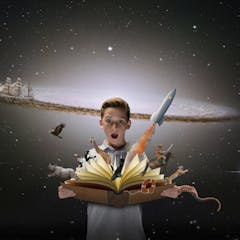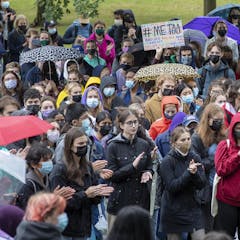
Articles sur STEM
Affichage de 1 à 20 de 272 articles

Canada needs the arts, with its insights into human behaviour and thinking, more than ever. But governments and funding agencies should shift funding models for arts graduate education.

Ethics is often neglected in engineering education, two researchers write, despite mounting questions about how to responsibly design artificial intelligence programs.

In the latest higher education funding freeze: sacrificing the arts for STEM subjects makes no sense.

A survey of Indigenous people found almost one quarter had not heard of STEM. But more than 80% saw a connection between science, technology, engineering, maths and Indigenous culture.

The fanfare and hype around the results risks obscuring the big picture.

Is it a STEM education or a STEAM education? Integrating arts into science programming and vice versa can pique kids’ curiosity − a play touring Michigan aims to do just that.

Studies reveal women’s research receives tougher assessment, less funding, fewer prizes and less citation than men’s.

Astronauts living and working on the Moon will need something to eat. The Growing Beyond Earth program supports international space crop research.

Despite their scarcity, science fiction books are highly sought after by elementary school students.

Year after year, public schools have come up short on STEM teachers. An education policy scholar pushes for a novel solution.

A former physics teacher says America could lose its technological edge if it doesn’t do a better job of teaching quantum information science – starting in high school.

Faculty and university staff are embedding training to prevent gender-based and sexual violence into curricular goals of both arts and STEM classes.

By bridging culture and computation, heritage algorithms challenge the myth of ‘primitive cultures’ and forge a new understanding of science and art.

Integrated computing enables teachers to incorporate basic programming skills into K-12 students’ regular math, science and language arts classes.

Overall, women receive a smaller share of research funding – but it’s not due to how applications are weighed up. The problem starts with the workforce itself.

Commitments have been made to cybersecurity, defence and certain gaps in STEM education and workforce – but much remains to be seen this year once we review the national priorities.

NBA player Mac McClung may have just ‘saved’ the annual dunk contest, but scoring methods could still be improved, a dunking expert says.

Researchers are key to Canada’s capacity to create a high-tech economy, build the biomedical sector and seed entrepreneurial activity, but they can’t do it without research funding.

A new book explores a paradox: women have been excluded from Australian science for many social and political reasons, but were also present and active in it from its earliest days.

There is a huge and growing number of unfilled nurse vacancies in the NHS. But there is a solution.
